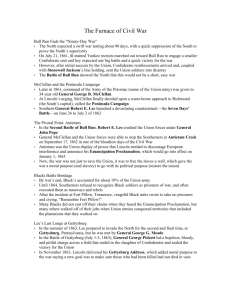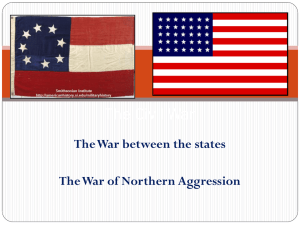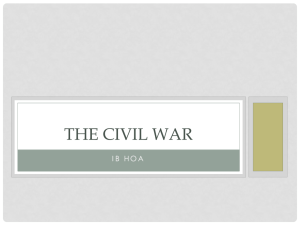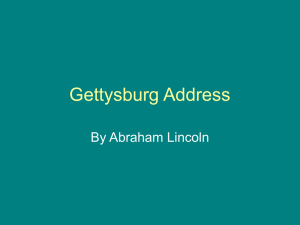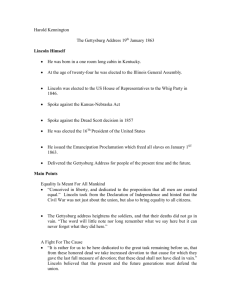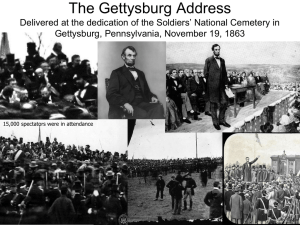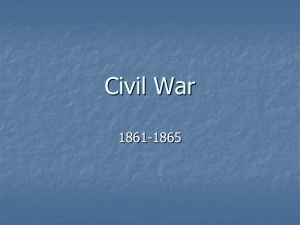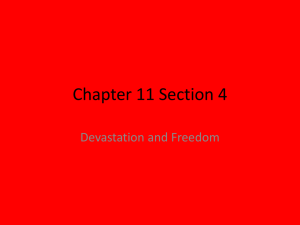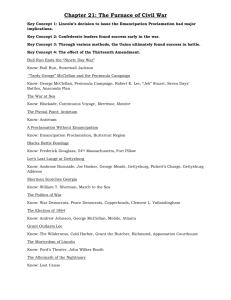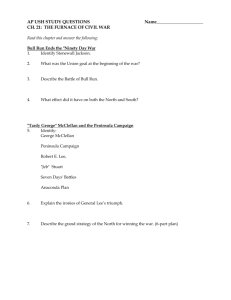The Furnace of Civil War
advertisement
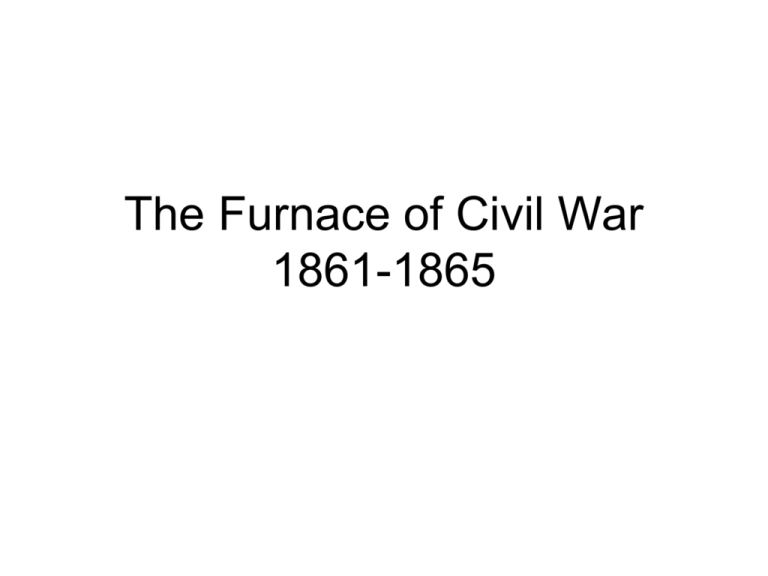
The Furnace of Civil War 1861-1865 Bull Run Ends the “Ninety-Day War” • On July 21, 1861, ill-trained Yankee recruits marched out toward Bull Run to engage a smaller Confederate unit and hey expected one big battle and a quick victory for the war • However, after initial success by the Union, Confederate reinforcements arrived and, coupled with Stonewall Jackson’s line holding, sent the Union soldiers into disarray • The Battle of Bull Run showed the North that this would not be a short, easy war Battle of Bull Run McClellan and the Peninsula Campaign • Later in 1861, command of the Army of the Potomac (name of the Union army) was given to 34 year old General George B. McClellan • At Lincoln’s urging, McClellan finally decided upon a waterborne approach to Richmond (the South’s capital), called the Peninsula Campaign • Southern General Robert E. Lee launched a devastating counterattack—the Seven Days’ Battle—on June 26 to July 2 of 1862 Lincoln and McClellan Peninsula Campaign, 1862 Main Thrusts, 1861–1865 The Anaconda Plan Monitor and Merrimack The Pivotal Point: Antietam • General McClellan and the Union forces were able to stop the Southerners at Antietam Creek on September 17, 1862 in one of the bloodiest days of the Civil War • Antietam was the Union display of power that Lincoln needed to discourage European interference and announce his Emancipation Proclamation, which would go into effect on January 1, 1863 • Now, the war was not just to save the Union, it was to free the slaves as well, which gave the war a moral purpose (end slavery) to go with its political purpose (restore the union) Lincoln with McClellan and staff at the Grove Farm after the battle. Blacks Battle Bondage • By war’s end, Black’s accounted for about 10% of the Union army • Until 1864, Southerners refused to recognize Black soldiers as prisoners of war, and often executed them as runaways and rebels • Many Blacks did not cast off their chains when they heard the Emancipation Proclamation, but many others walked off of their jobs when Union armies conquered territories that included the plantations that they worked on The 54th Massachusetts at the Second Battle of Fort Wagner, July 18, 1863 Lee’s Last Lunge at Gettysburg • In the summer of 1863, Lee prepared to invade the North for the second and final time, at Gettysburg, Pennsylvania, but he was met by General George G. Meade • In the Battle of Gettysburg (July 13, 1863), General George Pickett led a hopeless, bloody, and pitiful charge across a field that ended in the slaughter of Confederates and sealed the victory for the Union • In November 1863, Lincoln delivered his Gettysburg Address, which added moral purpose to the war saying a new goal was to make sure those who had been killed had not died in vain Photograph of the aftermath at Gettysburg The Road to Gettysburg, December 1862– July 1863 Battle of Gettysburg, 1863 The War in the West • Lincoln finally found a general who would act in Ulysses S. Grant, and he fought under the ideal of “immediate and unconditional surrender” • At Vicksburg, Mississippi, U.S. Grant besieged the city and captured it on July 4, 1863, thus securing the important Mississippi River • General William Tecumseh Sherman captured and burned down Atlanta before completing his infamous “March to the Sea” at Savannah • His men cut a trail of destruction one-mile wide, waging “total war” by cutting up railroad tracks, burning fields and crops, and destroying everything Grant Sherman The Mississippi River and Tennessee, 1862–1863 Sherman's March, 1864–1865 Union Party, 1864 Presidential Election of 1864 (showing popular vote by county) Grant Outlasts Lee • Grant engaged the Confederates in battles because he knew that he could afford to lose twice as many men as Lee • In a series of wilderness encounters, Grant fought Lee, with Grant losing about 50,000 men • Finally, Grant and his men captured Richmond, burnt it, and cornered Lee at Appomattox Courthouse, Virginia in April of 1865, where Lee formally surrendered Grant and Lee at Appomattox Courthouse Grant's Virginia Campaign, 1864–1865 The Martyrdom of Lincoln • On April 14, 1865, Abraham Lincoln was shot by John Wilkes Booth and died the next day • The Civil War cost 600,000 men, $15 billion, and eradicated the institution of slavery • The Civil War also gave America a supreme test of its existence proving its strength and further increasing its growing power and reputation Lincoln's assassin, Booth, is goaded by a hideous Mephistophelian figure to shoot the President, who is visible in a theater box beyond.
